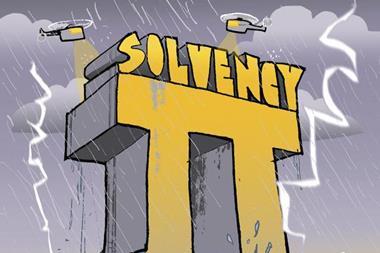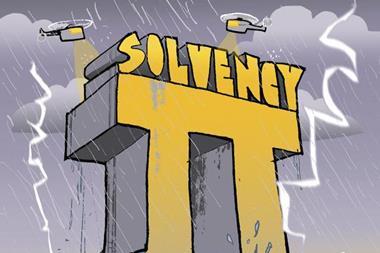Insurers will have to get to grips with ORSA – the annual self-assessment that regulators will use as a supervisory tool
Solvency II imposes a self-regulatory component with ORSA (Own Risk and Solvency Assessment). The ORSA has a two-fold nature: first, it is an internal assessment process that is embedded in the strategic decisions of the undertaking; second, it is also a supervisory tool for the regulatory authorities, who are informed of the results.
While the firm’s Solvency Capital Requirement (SCR) calibration is a good foundation for its ORSA, the final assessment should also pinpoint areas where it may differ from the SCR calculation and include details on the methods used, the internal model and how those formulas help achieve the ORSA results.
Integral to strategy
ORSA is not a one-time report; insurers will be required to repeat this assessment every year. Therefore, insurers will need to assemble processes and systems for identifying and quantifying risk that can be quickly and easily updated. They will also need to prove that the ORSA results are considered by key corporate decision-makers and that they have an impact on the overall strategic direction of the business. For instance, are they taking ORSA into account whenever they assume new risk? In considering new risk, do they take on less or find new ways to lay off the risk via re-insurance or co-insurance strategies? Supervisors will want to see that ORSA is more than an actuarial process and that it is being used to drive overall corporate direction.
In addition to ORSA, insurers that intend to pursue a partial or full internal model route as an alternative to the supervisor’s standard model are required to provide a “use test.” This should demonstrate that the internal model is widely used and plays an important part in compliance. In fact, the use test provides the regulators with the confidence they need that management is actually using these models to make its business decisions. It also gives insurers an advantage in that it stimulates them to fully understand and manage risks in their balance sheets.
Who's responsible?
Each insurer assumes responsibility for its own ORSA process and reporting as well as its use test, should it rely on internal models. Both should be regularly reviewed and approved by the organisation’s administrative or management body.
To date, it remains unclear whether or not insurance C-suite executives will be held personally accountable for their Solvency II compliance and the processes around it. While the person in charge of the financial statements and the company itself are held responsible for shortfalls or non-compliance with the act, there is no directive as yet regarding penalties if some part of the process is not followed.
What is perhaps more troubling is that so few senior executives have a clear understanding of Solvency II in general, much less their own accountability. According to SunGard’s recent study, only slightly more than a quarter of senior executives were reported to be well informed about Solvency II; the majority had limited or poor understanding of the issue at that time.
Petra Wildemann is the global director of Actuarial and Solvency II Consulting Services for the SunGard platform, iWorks Prophet. Petra has extensive international experience in the insurance industry and has delivered large-scale global business and transformation programmes with Accenture, FJA and IBM and insurance customers worldwide. Prior to joining SunGard, she worked for six years at Hewlett Packard as the worldwide director for the insurance business.
Hosted by comedian and actor Tom Allen, 34 Gold, 23 Silver and 22 Bronze awards were handed out across an amazing 34 categories recognising brilliance and innovation right across the breadth of UK general insurance.














































No comments yet